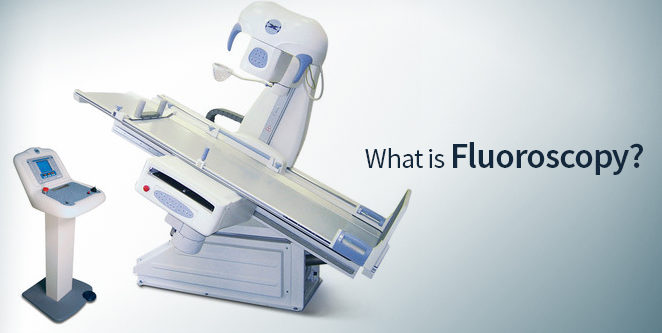The global long-term care software industry to grow at a CAGR of 11-13% during the next five years
The main
drivers propelling the long-term care software market are the rising geriatric
population, workforce churn in geriatric care, technology improvements in
wearables, and government initiatives
Long-term care software is a software solution
that is used for the management and support of long-term healthcare facilities
such as nursing homes, assisted living facilities, hospices, and independent
living services such as home healthcare services. Clinical software is
included in long-term care software (EMR/EHR, E-prescribing, Electronic Medical
Administration Records, Clinical Decision Support Systems) and Non-Clinical
Software [Real-time locating systems (RTLS), Billing, Invoicing, &
Scheduling, Payroll Management].
The growing elderly population is fueling demand for long-term care
software.
According
to WHO predictions, by 2030, one in six persons worldwide would be above the
age of 60. The trend is poised to continue as developing countries are
beginning to see increased life expectancies. In several developed countries
populations already have significant elderly populations, for instance, In
Japan, 29% of the population is over 65 and similar trends are being observed
in multiple European countries. China is witnessing a similar problem whereby
2050, ~40% of the population will be above retirement age, increasing its
dependency from 37% in 2015 to 70% in 2050. The UK has also seen dependency
raising from 1/10 dependents to productive individuals at the introduction of
the social state to 1/3 in the present day. These population imbalances are
critical drivers for the long-term care software market as a lower percentage
of the population is caring for more elderly patients.
Healthcare staff shortages are projected to stimulate long-term care software market demand as a result of the need
Another
critical factor for the long-term care software market is the use of software
as a result of the high level of churn in the healthcare sector. There is a
present-day shortage of over 1 million workers in the EU, this trend is set to
continue. Similar churn from healthcare workers has been witnessed in the US.
Because of a shortage of healthcare staff, the time patients can be seen gets
decreases. Long-term care software can reduce the time spend on individuals by
healthcare professionals in a multitude of ways:
- Automating routine
tasks: Long-term care software can automate everyday tasks, such as
medication management, scheduling, and billing. This can free up staff
time and enable them to focus on higher-value tasks, such as patient care
- Improving communication
and collaboration: Electronic health records (EHRs) allow multiple
providers to access and update patient records in real time, decreasing
the need for manual data entry and improving the accuracy of information.
Centralized Patient Data Storage Eliminates the Need for Manual File
Collection and Movement by Staff
- Enabling remote care:
Remote Care (Telehealth or Telemedicine) Empowers Healthcare Professionals
to Deliver Care and Monitor Patients Remotely. This is especially useful
in areas where there are shortages of healthcare professionals. These
Solutions Offer Cost Reductions in Healthcare, remove barriers to
healthcare and often improve patient outcomes.
Examples of telehealth solutions:
- Remote monitoring
tools: Wearable devices and mobile apps gather patient data such as
glucose levels, pulse, and oximetry information and offer alerts for
situations like patient falls
- Video medicine:
Adoption of video assessments frees up healthcare professionals time for
low complexity or recurrent problems in patients, which increases staff
efficiency
· Providing decision support:
Long-term care software can provide decision support tools that help healthcare
professionals make informed decisions about patient care. For example, clinical
decision support systems can put up alerts and recommendations based on patient
data, helping to improve the quality of care and reduce the risk of errors.
Partnerships have emerged as a common strategy to expand the clientele
and capabilities of Long-Term Care Software providers
Long-term
care software firms are increasingly forming alliances with other software
companies that have distinct capabilities in order to boost their position in
the Long-Term Care Software Market
For
instance,
- In October 2022, PainChek (a
foremost pain assessment tool provider) signed a marketplace partnership
agreement with Point Click Care Inc, a leading Care Management Software
System provider to nursing homes (long-term aged care) in the USA and
Canadian markets. PainChek’s integration into the PointClickCare platform
Facilitating a seamless transition of the PainChek pain assessments into
the Nursing Home’s resident information system for the USA and Canadian
markets. PointClickCare to Publicize PainChek Integration to Nursing Home
Clients in the USA and Canada via Its Website and Regular In-Person Client
Gatherings
North America is projected to dominate the market share of the
long-term care software market
The
long-term care software market is strong in the US. Baby boomers (individuals
born between 1946 and 1964) are a generation defined by a period of strong
population growth and are now reaching an advanced age. As per estimates, in
the US by 2030 all boomers will be over the age of 65 and will represent 21% of
the population. According to the US Census Bureau, by 2034, the number of
adults aged over 65 will reach 77 million while those under 18 will number 76.5
million. This enlarging number of older adults is poised to fuel demand for
assisted living and in-home care and in turn demand for long-term care
software.
Competitive Landscape Analysis: Long-Term Care Software Market
Some of the
prominent players in the long-term care software market are as follows Netsmart
Technologies, MatrixCare, Cerner Corporation (Acquired by Oracle), WellSky, and PointClickCare. These companies provide a range of
software solutions, from electronic health records (EHR) to financial
management and analytics tools, to meet the diverse needs of long-term care
facilities.
Get Detailed report on Long-Term Care Software
Market@ https://meditechinsights.com/long-term-care-software-market/
About Medi-Tech Insights:
Medi-Tech
Insights is a healthcare-focused business research & insights firm. Our
clients include Fortune 500 companies, blue-chip investors & hyper-growth
start-ups. We have completed 100+ projects in Digital Health, Healthcare IT,
Medical Technology, Medical Devices & Pharma Services.
Contact Us:
Ruta Halde
Associate,
Medi-Tech Insights





Comments
Post a Comment